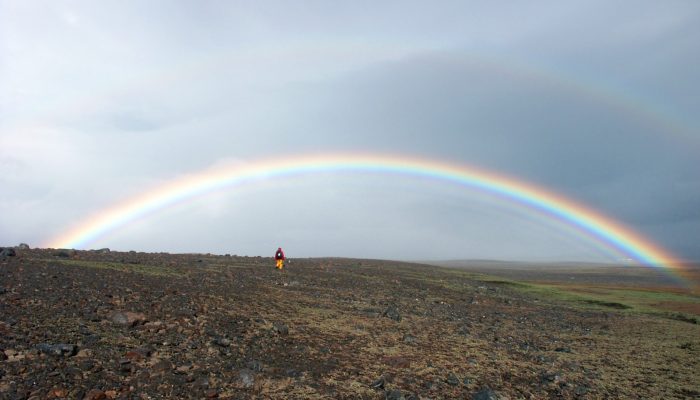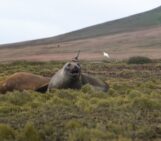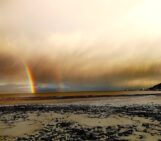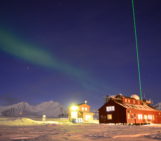
Back in February 2005, François Dulac and Rémi Losno worked in the field in the very remote Kerguelen Islands (also known as the Desolation Islands). Located in the southern Indian Ocean they are one, of the two, only exposed parts of the mostly submerged Kerguelen Plateau.
Our work consisted in sampling atmospheric aerosols and their deposition by rain on the island, which is a meeting point for the roaring fourties (strong westerly winds found in the Southern Hemisphere between 40 and 50 degrees latitude) and the equally turbulent furious fifties (which occur at more southerly latitudes still).
The aim of the study was to evaluate the input of chemical elements (in very low concentrations) derived from continental soil dust, to the remote surface waters of the Southern Ocean. Given the scarcity of land areas at this latitude, the particles were expected to have travelled long distances before arriving at Kerguelen.
For example, iron – one of the major elements in the Earth crust and soils – is of particular interest in this oceanic area because it is a micro-nutrient that limits the productivity (and related CO2 sink) of the Southern Ocean.
The island’s air was often very clear and the horizontal visibility unusually high, as can be seen in the photo. It highlights that atmospheric aerosol concentrations (the mixture of solid and liquid particles from natural and anthropogenic sources) are very low in this environment. Field sampling and subsequent chemical analyses require constraining protocols adapted to ultra-traces in order to minimize contamination of samples and blank levels.
The unique atmospheric conditions also meant we had problems estimating distances: we often found ourselves underestimating the stretch between two points during our long walks between the base and our remote sampling stations. In addition, the combination of very clean air, low sun and fast running atmospheric low-pressure systems carrying water clouds at low-level over the cold ocean make rainbows relatively frequent.
Walking back to the base after changing samples, we were caught in a rain shower. Raindrops were almost falling horizontally due to the high wind speed, leaving the soil dry downwind of the stones and rocks lying on the ground. A few minutes later clouds had passed and sunlight reflecting and diffracting in the cloud droplets offered us a spectacular semi-circular rainbow.
It was particularly special because it displayed an infrequent combination of (i) the main, classic, bright rainbow that shows up at 138-140 degrees from the direction of the sunlight, (ii) a secondary rainbow due to double reflection of sunlight in droplets that appears higher on the horizon at an angle of about 127-130 degrees and with an inversion of colours compared to the main bow (red inside), and (iii) one supernumerary rainbow with pastel green, pink and purple fringes on the inner side of the primary bow.
This stacked rainbow is caused by interferences and was first explained in 1804 by Thomas Young. It indicates the presence of small, uniformly sized droplets. The dark area visible here on the right-hand side between the primary and secondary rainbows is called the Alexander’s band, after the ancient Greek philosopher Alexander of Aphrodisias comments on Aristotle’s Meteorology treatise, published in the early 3rd century. It is due to a lack of light resulting from the fact that diffracted rays are either reflected back inside the primary rainbow (causing this area to be brighter) or outside the secondary rainbow.
By François Dulac, Laboratoire des Sciences du Climat et de l’EnvironnementCEA/LSCE, Gif-sur-Yvette, France
Imaggeo is the EGU’s online open access geosciences image repository. All geoscientists (and others) can submit their photographs and videos to this repository and, since it is open access, these images can be used for free by scientists for their presentations or publications, by educators and the general public, and some images can even be used freely for commercial purposes. Photographers also retain full rights of use, as Imaggeo images are licensed and distributed by the EGU under a Creative Commons licence. Submit your photos at http://imaggeo.egu.eu/upload/.



